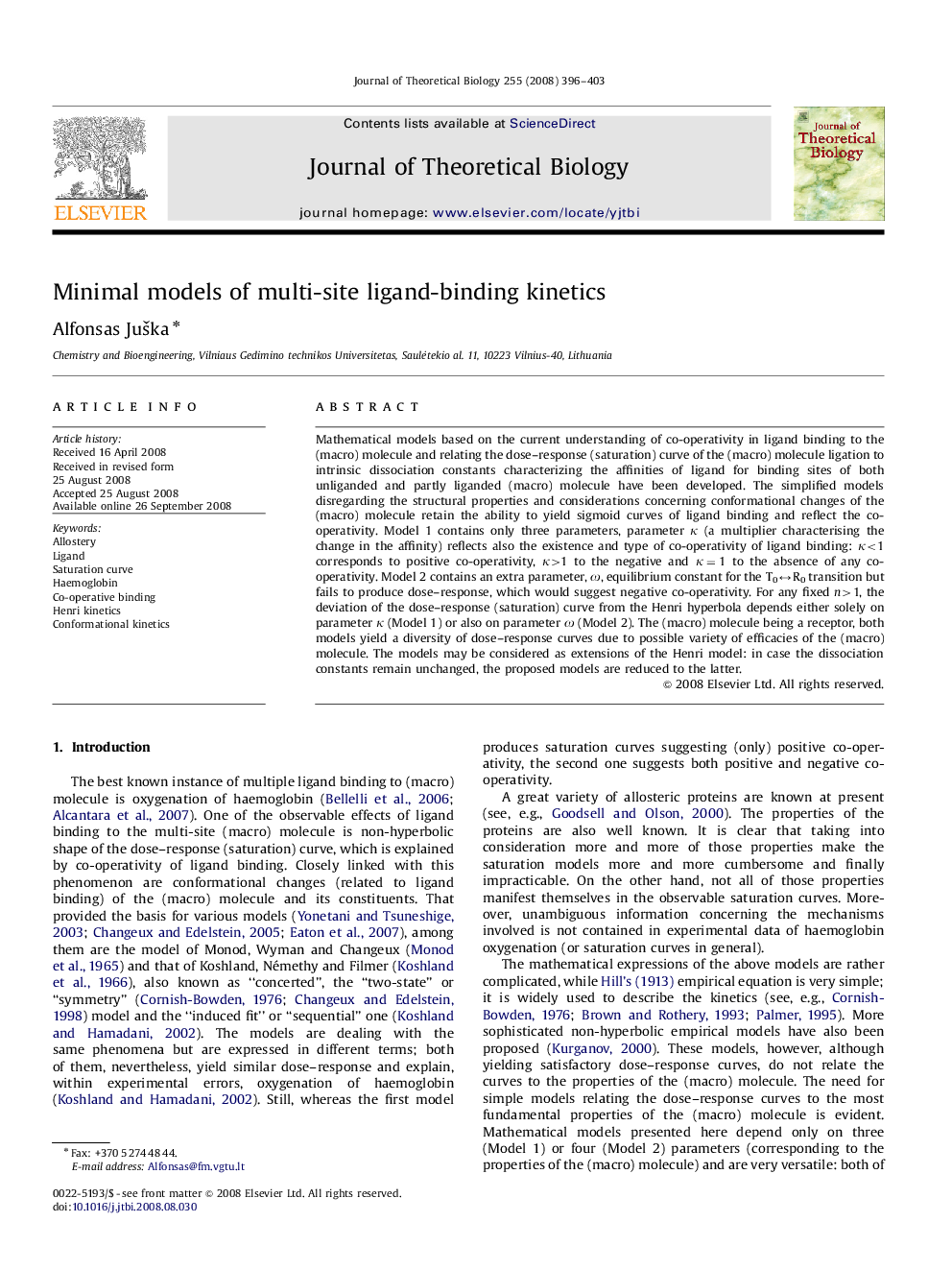| Article ID | Journal | Published Year | Pages | File Type |
|---|---|---|---|---|
| 4498597 | Journal of Theoretical Biology | 2008 | 8 Pages |
Mathematical models based on the current understanding of co-operativity in ligand binding to the (macro) molecule and relating the dose–response (saturation) curve of the (macro) molecule ligation to intrinsic dissociation constants characterizing the affinities of ligand for binding sites of both unliganded and partly liganded (macro) molecule have been developed. The simplified models disregarding the structural properties and considerations concerning conformational changes of the (macro) molecule retain the ability to yield sigmoid curves of ligand binding and reflect the co-operativity. Model 1 contains only three parameters, parameter κ (a multiplier characterising the change in the affinity) reflects also the existence and type of co-operativity of ligand binding: κ<1 corresponds to positive co-operativity, κ>1 to the negative and κ=1 to the absence of any co-operativity. Model 2 contains an extra parameter, ω, equilibrium constant for the T0↔R0 transition but fails to produce dose–response, which would suggest negative co-operativity. For any fixed n>1, the deviation of the dose–response (saturation) curve from the Henri hyperbola depends either solely on parameter κ (Model 1) or also on parameter ω (Model 2). The (macro) molecule being a receptor, both models yield a diversity of dose–response curves due to possible variety of efficacies of the (macro) molecule. The models may be considered as extensions of the Henri model: in case the dissociation constants remain unchanged, the proposed models are reduced to the latter.
